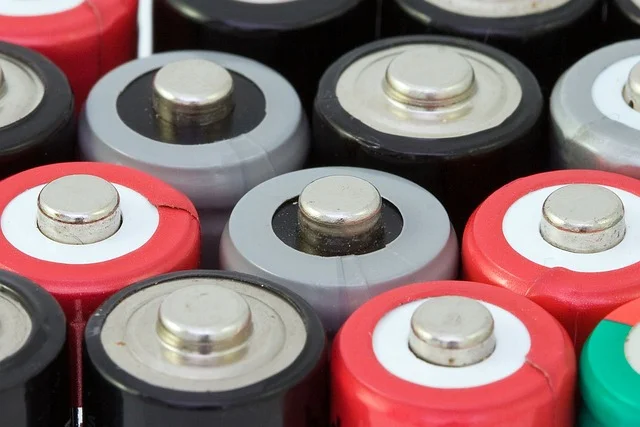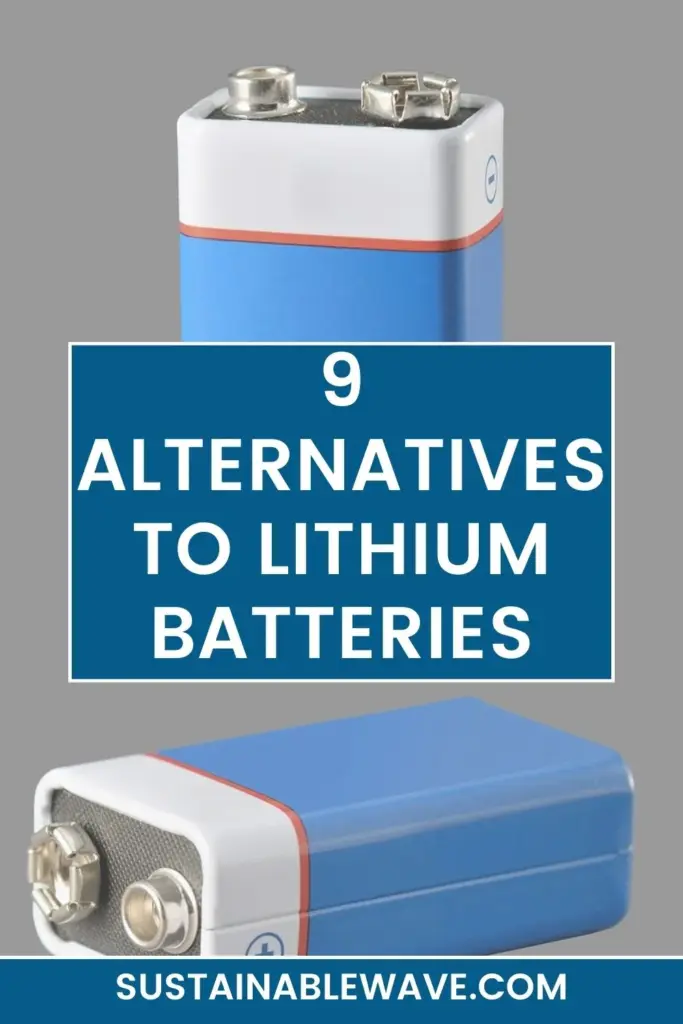The world of battery technology has seen rapid advancements in recent decades. From powering our gadgets to driving electric vehicles, batteries play a pivotal role in our daily lives. Among these, lithium batteries have dominated the market, but with growing concerns over their environmental impact and sustainability, the search for alternatives is intensifying.
Alternatives to lithium batteries include magnesium batteries, seawater batteries, nickel-metal hydride (NiMH), lead-acid batteries, sodium-ion cells, and solid-state batteries. These options offer varying benefits in cost, safety, and environmental impact, presenting potential solutions for diverse energy storage needs.
The journey of battery technologies has been a fascinating one. From the rudimentary voltaic pile to the sophisticated lithium-ion cells, the evolution has been driven by the demands of a growing, tech-savvy population.
9 Alternatives to Lithium Batteries

The quest for sustainable and efficient alternatives to lithium batteries has led to several promising technologies.
Nickel-Metal Hydride (NiMH)
Nickel-metal hydride (NiMH) batteries represent a significant step forward from their predecessor, the Nickel-Cadmium (NiCd) batteries.
With a higher energy density, NiMH batteries can store more energy than NiCd batteries of the same size. They are also more environmentally friendly, as they do not contain toxic cadmium.
Commonly found in hybrid vehicles and some older models of rechargeable household batteries, NiMH batteries offer a good balance between cost and performance. However, they do have a “memory effect,” which means if they’re repeatedly recharged without being fully discharged, they may lose some capacity.
Lead-Acid Batteries
Lead-acid batteries are among the oldest types of rechargeable batteries, having been in use since the late 1800s. They are heavy due to their lead content but are reliable and can deliver high current. This makes them ideal for applications like car starter motors.
There are two main types: the flooded (or wet) type, which needs to be upright to prevent acid leakage, and the sealed lead-acid (SLA), which is leak-proof.
While they are relatively inexpensive to produce and have a decent lifespan, their weight and the toxic nature of lead make them less ideal for portable electronic devices.
Sodium-Ion Batteries
Sodium-ion batteries operate on a similar principle as lithium-ion batteries, but instead of lithium ions, they move sodium ions between the anode and the cathode.
Sodium is more abundant and cheaper than lithium, making sodium-ion batteries a potentially more cost-effective alternative. Additionally, they are less prone to overheating and are more stable at high temperatures. However, they currently offer a lower energy density than lithium-ion batteries.
Research is ongoing to improve their performance and make them a viable alternative for various applications.
Solid-State Batteries
Solid-state batteries are generating significant buzz in the battery world. Unlike traditional batteries that use liquid electrolytes, solid-state batteries use a solid electrolyte. This change in design offers several advantages.
Firstly, they are safer as solid electrolytes are non-flammable, reducing the risk of battery fires.
Secondly, they can potentially offer higher energy densities, allowing for longer battery life. They also have a longer lifespan and can endure more charge-discharge cycles than their liquid counterparts.
Companies and researchers are investing heavily in this technology, seeing it as the future of electric vehicles and other high-demand applications.
Flow Batteries
Flow batteries, also known as redox flow batteries, are a unique type of rechargeable battery where energy is stored in liquid electrolytes rather than solid electrodes.
These electrolytes are housed in external tanks and pumped through a power cell, where the energy conversion process occurs. One of the primary advantages of flow batteries is their scalability.
By simply increasing the size of the electrolyte tanks, one can increase the battery’s capacity. This makes them particularly suitable for large-scale energy storage applications, such as grid storage.
Additionally, they have a long cycle life and can be discharged completely without harm, unlike some other battery types.
Graphene Batteries
Graphene batteries are a type of battery that incorporates graphene, a single layer of carbon atoms arranged in a hexagonal lattice, into the electrode design.
Graphene is known for its exceptional electrical conductivity, flexibility, and strength. When used in batteries, graphene can enhance the performance in several ways. It can increase the battery’s energy density, allowing it to store more energy.
It can also reduce charging times significantly. Furthermore, graphene batteries tend to have a longer lifespan and can endure more charge-discharge cycles than traditional lithium-ion batteries.
While they hold immense promise, the challenge lies in the cost-effective and scalable production of high-quality graphene.
Hemp Batteries
Hemp batteries utilize the fibrous woody core of the hemp plant, known as the hurd, to create carbon nanosheets, which can then be used as electrodes in supercapacitors.
Supercapacitors, or ultracapacitors, are energy storage devices that can charge and discharge energy much faster than traditional batteries. While hemp-derived carbon nanosheets might not store as much energy as conventional batteries, they can charge much faster and have a longer cycle life.
The use of hemp, a fast-growing and sustainable crop, makes this technology environmentally friendly and potentially cost-effective. As research progresses, hemp batteries could become a green alternative in the energy storage sector.
Magnesium Batteries
Magnesium batteries are emerging as a promising alternative to traditional lithium-ion batteries.
Magnesium, being a divalent cation, can move twice the charge per ion, potentially doubling the energy density. This means that magnesium batteries could store more energy in the same amount of space.
Additionally, magnesium is more abundant and less expensive than lithium, making it a cost-effective option. Moreover, magnesium batteries are considered safer due to the non-dendritic nature of magnesium, reducing the risk of short circuits.
While there are challenges to overcome, such as finding a suitable electrolyte, ongoing research is paving the way for their commercial viability.
Seawater Batteries
Seawater batteries offer an innovative approach to energy storage by using the abundant resource of seawater as the electrolyte. These batteries utilize sodium, which is extracted from seawater, to generate electrical power.
One of the primary advantages of seawater batteries is their eco-friendliness. They don’t rely on rare or toxic materials, making them both sustainable and less harmful to the environment. Additionally, they present a lower risk of overheating or explosion compared to traditional batteries.
While their energy density is currently lower than lithium-ion batteries, advancements in technology and research could make seawater batteries a viable option for large-scale energy storage in the future.
Why Seek Alternatives to Lithium Batteries?
Lithium batteries, while revolutionary in their impact on modern technology, have raised several concerns that necessitate the exploration of alternatives.
- Environmental Concerns: The extraction and processing of lithium can have detrimental effects on the environment. Mining often leads to water pollution, soil degradation, and air contamination. Additionally, the disposal of lithium batteries poses challenges, as they can leach harmful chemicals if not properly recycled.
- Limited Resources: Lithium is a finite resource. As the demand for batteries in electronics and electric vehicles grows, there’s a looming threat of depleting these reserves, leading to potential supply chain disruptions and price volatility.
- Safety Issues: There have been instances of lithium batteries overheating or catching fire. While these incidents are rare, they underscore the need for safer battery technologies, especially in applications where battery failure can have catastrophic consequences.
Comparing the Alternatives
When considering alternatives to lithium batteries, it’s essential to weigh the pros and cons of each option to determine their viability.
- Energy Density: While lithium batteries are known for their high energy density, some alternatives, like solid-state and graphene batteries, are making strides in this area, potentially offering even greater storage capacities.
- Cost: The cost of battery technology isn’t just about the initial price but also factors in lifespan, performance, and maintenance. For instance, while lead-acid batteries might be cheaper upfront, their weight and shorter lifespan could lead to higher costs in the long run.
- Environmental Impact: As the world becomes more environmentally conscious, the ecological footprint of battery technologies becomes a crucial consideration. Some alternatives, like hemp batteries, offer a more sustainable and eco-friendly solution.
- Safety and Reliability: The ideal battery technology would pose minimal risk to users and their surroundings. Solid-state batteries, with their non-flammable electrolytes, are a step in the right direction.
Final Words on Alternatives to Lithium Batteries

The quest for alternatives to lithium batteries isn’t just a matter of replacing one technology with another. It’s about finding solutions that are sustainable, efficient, safe, and cost-effective.
As research and development in this field continue, we can expect to see breakthroughs that not only match the performance of lithium batteries but potentially surpass them in many aspects.
The future of battery technology is bright, promising a world where energy storage solutions meet the diverse needs of industries and consumers alike.
I’m Thomas, the owner of SustainableWave. Passionately promoting a sustainable planet. With experience in various eco-roles, I’ll share green tips, sustainability hacks, and personal eco-journeys on my blog.






